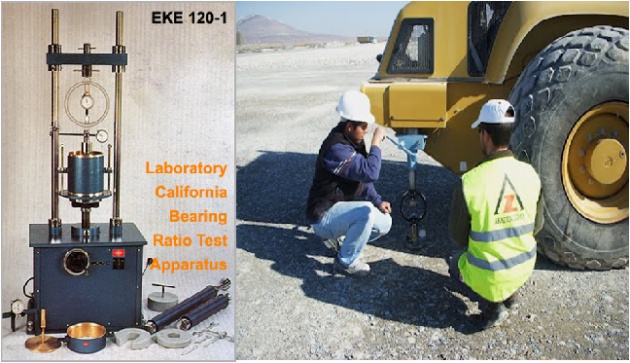California Bearing Ratio (CBR): It is a load penetration test for the evaluation of Mechanical Strength of Subgrades and Base-courses of roads (usually highways and motorways), railways and runways. It was developed by the “California Department of Transportation” before World War II.

Chisel Energy Test (E): It is the energy required for a Chisel-Weight to penetrate the ground. It is very similar to SPT. Dropping of weight having the shape of a Chisel is = 1 to 2 tons. Weight = W; Effective Area = A in sq. m, dropped through the height of H in m. Penetration distance is d in cm for N number of blows delivered in half an hour. Relationship of Chisel Energy Test E is given by:
E = WHN/Ad
Unconfined Compressive Strength of the Rocks having various strengths:
Class Type of rock Unconfined Compressive Strength(N/mm2)
A Very high strength 225
B High strength 112 - 225
C Medium strength 50 - 112
D Low strength 28 - 55
E Very low strength < 28
Titles of some Surface Geological Reports:
1)Introduction giving description of the project 2)Physical Geology, Rivers, Drainage Pattern, Climate and other Physiographic Description 3)Age and Geological Sequence of the Rock Formation and general characteristics of the types of rocks 4)Structural Geology stating the regional structures giving the description of major distinctive features of the rock formation and structural defects like folds, faults, joints, fractures, etc.
Titles of some Sub-surface Geological Reports:
1)Description of the project: About the project and construction materials 2)Site Description: Location, topography, climate, cultivation, etc.
3)Geology of the site: Regional geology, description of overburden and bedrock, and field geological features
4)Conclusions and Recommendations
5)Figures and Photos: General plan, aerial geology, location of project, geological and soil profiles
6)Appendix: Log of boring and coring tests, field test-data and lab tests’ results



